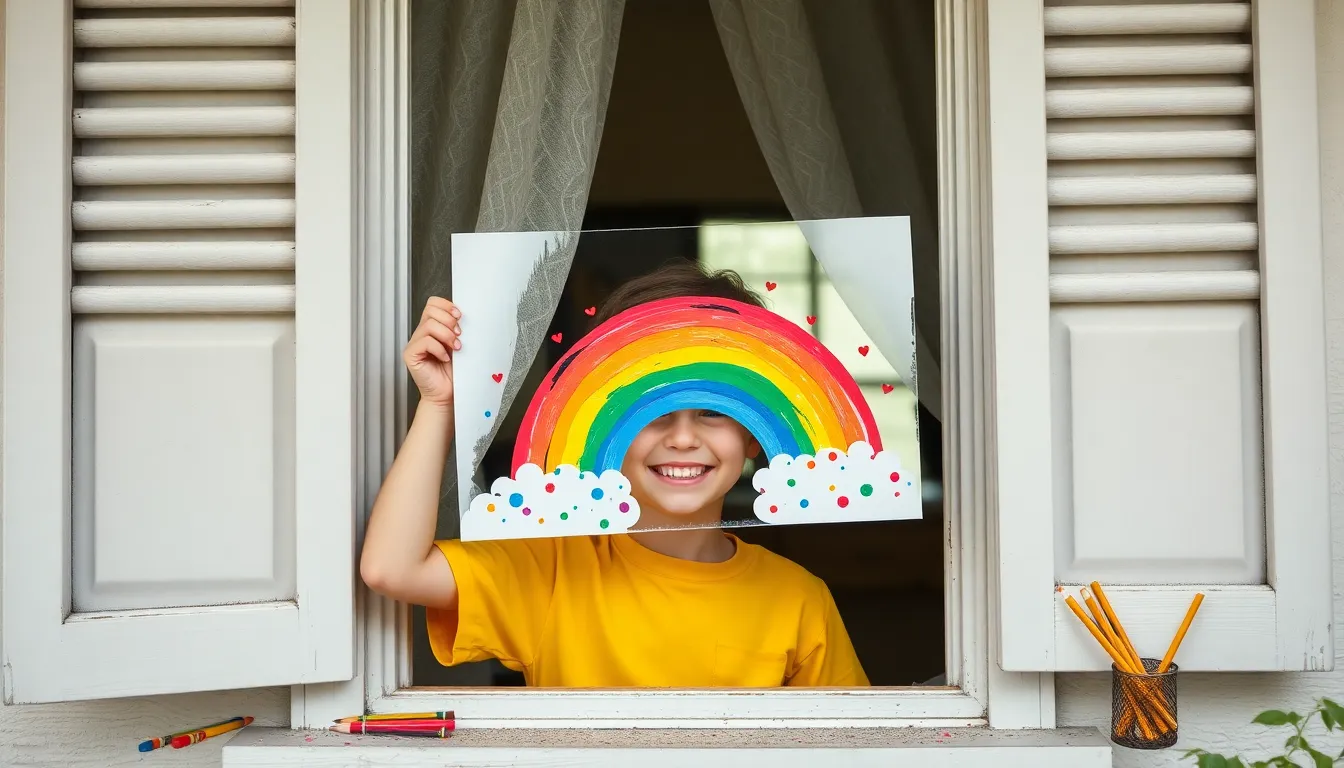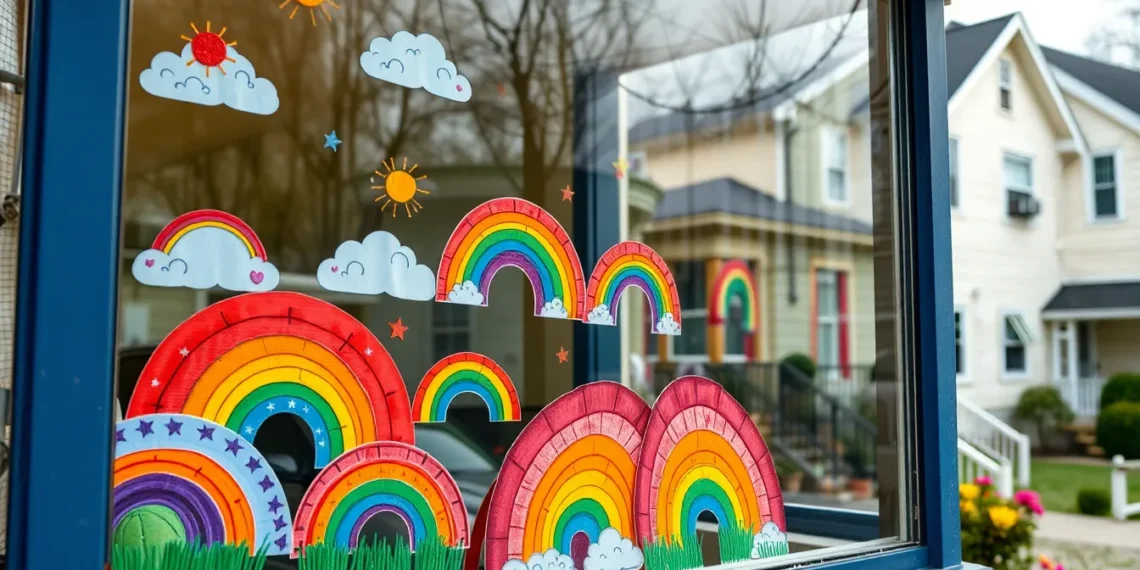In the midst of a pandemic that turned the world upside down, a splash of color emerged to brighten the days of many. Enter the Rainbow Challenge—a whimsical initiative that encouraged families to create vibrant rainbows in their windows as a symbol of hope and unity. It’s like a treasure hunt for positivity, where the prize is a little happiness in a time when it felt scarce.
As neighborhoods transformed into colorful canvases, this cheerful movement not only sparked creativity but also fostered a sense of community. Who knew that a simple piece of art could turn a frown upside down? The Rainbow Challenge became a beacon of light, reminding everyone that even in tough times, there’s always room for a bit of joy and laughter. Let’s dive into how this colorful trend took off and brought people together during the stormy days of COVID-19.
Rainbow Challenge COVID-19
The Rainbow Challenge emerged as a vibrant response to the isolation felt during the COVID-19 pandemic. Families began displaying colorful rainbows in their windows, symbolizing hope and resilience. This initiative encouraged creativity, transforming ordinary neighborhoods into canvases of positivity and unity.
Participants often used materials like paper, paint, and markers to craft their rainbows. Children frequently joined in, making art a fun and engaging activity amidst restrictions. As more households participated, the movement spread across communities, creating a shared sense of purpose.
The initiative gained traction on social media platforms, with families sharing photos of their rainbow displays. Through hashtags and challenges, users connected with others, fostering a sense of belonging during difficult times. Streets filled with rainbows quickly became symbols of solidarity, reminding everyone that brighter days lay ahead.
Research indicates that acts of creativity and community engagement contribute to mental well-being. Studies show that visual art has therapeutic effects, enhancing mood and reducing stress. The Rainbow Challenge offered an accessible way for individuals to express their emotions and connect with neighbors, reinforcing community bonds.
Schools also embraced this movement, using it as a teaching tool. Educators incorporated discussions around colors, emotions, and teamwork, inspiring students to create their own art. Through this shared activity, children learned valuable lessons about empathy and connection during a time of uncertainty.
Origin and Purpose of the Rainbow Challenge

The Rainbow Challenge emerged as a creative response during the COVID-19 pandemic. This initiative encouraged families to display colorful rainbows in their windows, symbolizing hope and unity.
Community Engagement
Participants engaged actively in this artistic endeavor, transforming neighborhoods into vibrant showcases of positivity. Families crafted rainbows using paper, paint, and markers, with children often taking the lead. As households joined in, the initiative fostered connections among neighbors, reinforcing community bonds. Online sharing of rainbow displays through social media heightened involvement, allowing families to inspire one another. The hashtags connected individuals beyond their localities, creating a broader sense of belonging. Streets adorned with rainbows became symbols of solidarity, reminding all that collaborative creativity has the power to uplift spirits during challenging times.
Raising Awareness
The movement raised awareness around mental well-being, highlighting the therapeutic benefits of creativity. Research shows that engaging in visual art can enhance mood and alleviate stress. Rainbows in windows served not only as symbols of hope but also as conversation starters about mental health. Schools integrated the challenge into educational discussions, promoting empathy and teamwork among students. This approach allowed children to explore their feelings and connect with others in meaningful ways. Increased visibility of the Rainbow Challenge encouraged broader community participation, demonstrating art’s role in social cohesion during uncertain periods.
Impact of the Rainbow Challenge on Mental Health
The Rainbow Challenge significantly affected mental health during the pandemic, providing artistic expression and community connection.
Emotional Support through Colors
Colors have a profound impact on emotions. Engaging in creative activities, like making rainbows, allowed individuals to channel feelings of hope and joy. Participants found that crafting vibrant displays fostered moments of happiness amid uncertainty. Families reported feeling more positive as they engaged in this creative outlet together. The visual nature of art served as a reminder of brighter days ahead, promoting emotional resilience. Research supports the notion that engaging in creative activities enhances mood and reduces anxiety. This transformative experience helped individuals articulate their feelings in a tangible way.
Strengthening Community Bonds
Communities became more connected through the act of displaying rainbows. Neighborhoods transformed into supportive environments filled with colorful expressions of unity. Sharing rainbow artwork on social media encouraged families to engage with one another, creating online communities. Individuals felt a sense of belonging through shared experiences and purpose. Local events centered around the Rainbow Challenge fostered fellowship, bringing neighbors together to celebrate resilience. Strengthened bonds among community members provided essential emotional support during a challenging time. The initiative ultimately served as a catalyst for deeper connections, reinforcing the importance of togetherness in navigating adversity.
Participation in the Rainbow Challenge
Many individuals and families choose to partake in the Rainbow Challenge, creating colorful rainbows to spread hope and positivity. Each contribution helps build a strong sense of community during challenging times.
How to Join the Challenge
Joining the Rainbow Challenge is simple. Families can create their own rainbows using materials like paper, paints, or markers. Displaying rainbows in windows or yards encourages neighbors to join in. Sharing pictures on social media with relevant hashtags fosters community spirit. It’s possible to inspire others to create their artworks through personal posts and interactions.
Creative Ways to Get Involved
Engagement in the Rainbow Challenge can take many forms. Crafting rainbows with varied materials invites creativity beyond traditional paper and paint. Using recycled items like plastic bottles or fabric adds uniqueness to displays. Also, organizing neighborhood contests promotes friendly competition and fun. Families can host virtual art sessions to collaborate on designs while keeping connected. Sharing rainbows as gifts in the community spreads joy to everyone involved.
Success Stories and Testimonials
Families across the globe shared their positive experiences with the Rainbow Challenge. One community reported increased interactions as neighbors felt encouraged to connect. Creative outlets like rainbow-making allowed children to express their thoughts during isolation. A teacher noted that students eagerly participated, excited to incorporate art into their lessons.
Local groups organized events to celebrate the initiative, transforming the challenge into a town-wide festival. Participants described how displaying rainbows sparked joy not only in their homes but also throughout their neighborhoods. Social media became a platform for sharing these uplifting stories, with hashtags uniting individuals in a collective movement.
Parents expressed gratitude for the mental health benefits their children experienced from the challenge. Many highlighted that crafting rainbows helped alleviate anxiety by providing routine and purpose. Testimonials revealed that families looked forward to working together, strengthening bonds through shared artistic projects.
Schools embraced the Rainbow Challenge, using it to teach children about empathy and resilience. A principal recounted how students learned valuable lessons about supporting one another in tough times. This initiative inspired creativity and collaboration, with art projects serving as a backdrop for discussions about emotions.
Communities continued to witness positive transformations as more participants joined in. One neighborhood transformed their streets into a vibrant canvas of hope, celebrating diversity through artistic expression. Positive feedback underscored the importance of art in fostering social connectedness during the pandemic.
Conclusion
The Rainbow Challenge has proven to be a beacon of hope during the COVID-19 pandemic. By encouraging creativity and community engagement it transformed neighborhoods into vibrant displays of positivity. Families found joy in crafting rainbows together fostering connections that transcended isolation.
This initiative not only uplifted spirits but also highlighted the therapeutic benefits of art. As people shared their creations online they strengthened community ties and inspired others to join in. Ultimately the Rainbow Challenge served as a powerful reminder of unity and resilience during challenging times.















